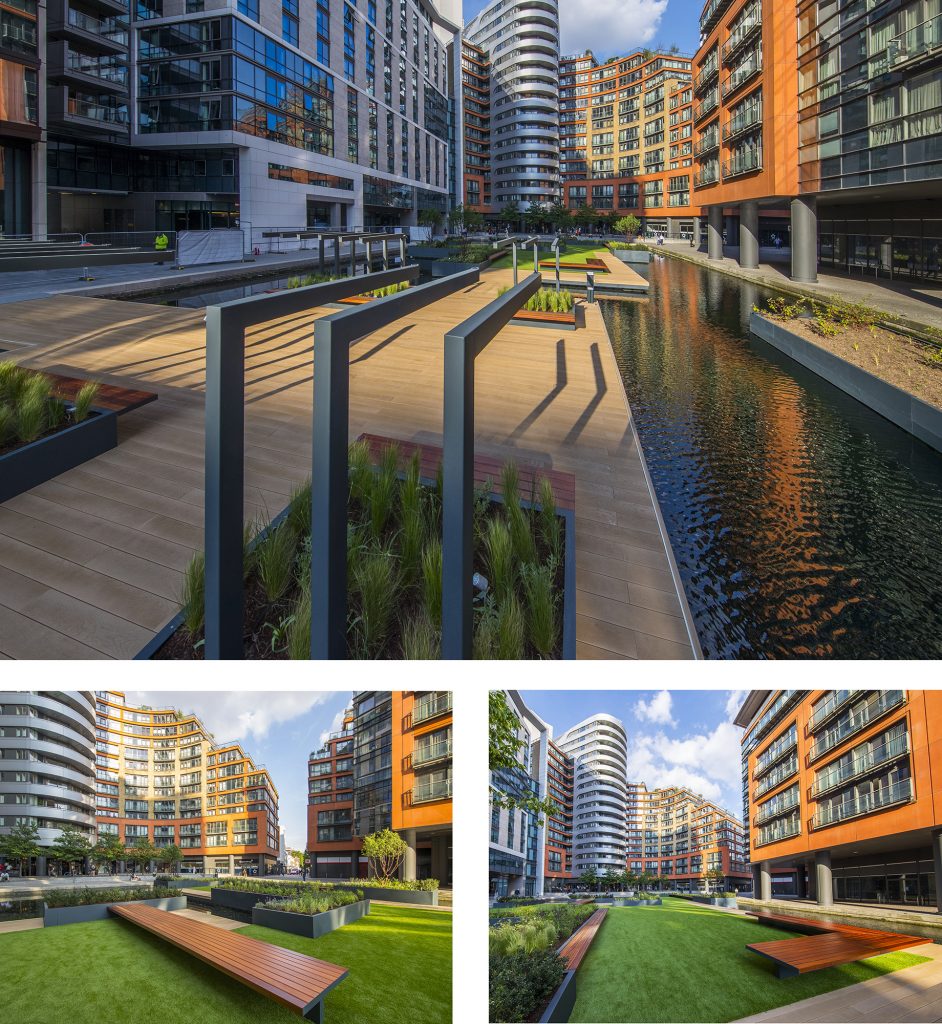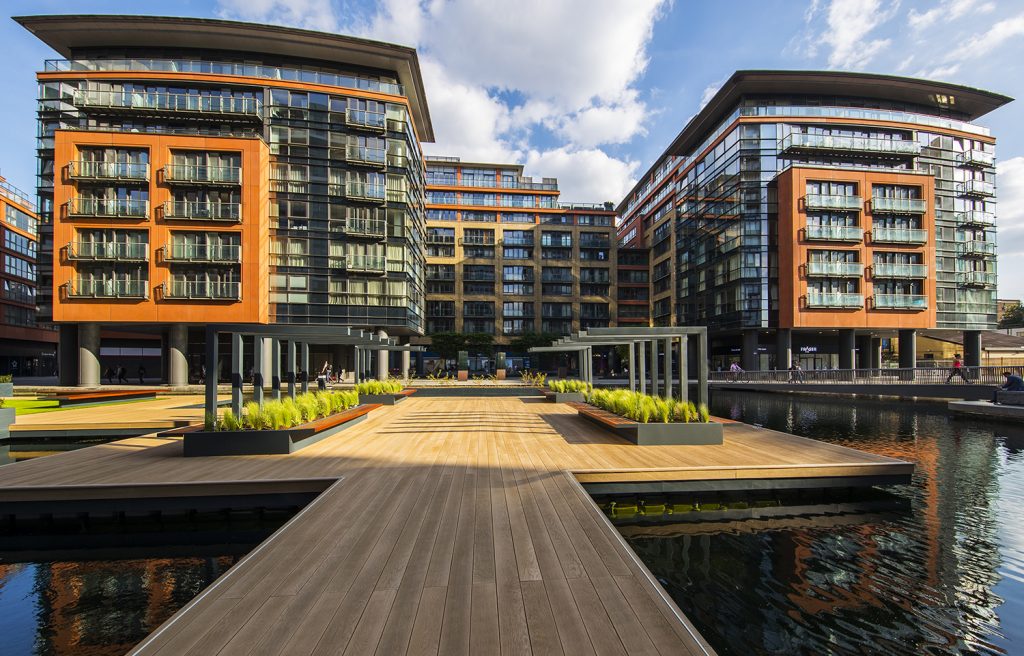The Merchant Square Project
London’s First Floating Park: Engineering Nature Above Water
Amid the architectural ambition and urban bustle of Paddington Basin, a truly unique landscape has taken shape. Welcome to London’s first floating park—a revolutionary urban green space designed by Tony Woods of Garden Club London, realised in collaboration with marine engineers, divers, and Europlanters. This bold and beautiful intervention into city living is moored in Merchant Square on the Grand Union Canal, and it quite literally floats above the water.
A Vision for a New Type of Park
While London boasts an impressive portfolio of parks and green spaces, none have previously ventured onto the water. This temporary—but transformative—project comes with a five-year planning permission, making the most of underused blue space and converting it into a lush public oasis.
The floating park spans 730 square metres, divided across three interconnected pontoons, two for public use and a third 12m x 3.3m pontoon dedicated entirely to wildlife. Purpose-built with specific planting and even a duck ramp, this secluded island is now a sanctuary for wildfowl and ground-nesting birds. During the build, local wildlife includingcormorants, coots, swans, pike, and a family of 11 ducklings quickly took interest in their new floating neighbour—an encouraging sign of ecological success.
Floating Foundations: The Engineering Behind the Greenery
Constructed over just two weeks, the floating platform uses interlocking recycled plastic modules to form a buoyant, stable base. However, balancing the load presented its own challenges. Under the guidance of a marine engineer, divers worked to install additional floatation beneath areas of greater load, and the entire structure was securely anchored to prevent drift.
This is where Europlanters stepped in—facing perhaps one of their most technically demanding projects to date.

A Living Landmark
The floating park has quickly become a visual and social landmark, perfectly complementing the kinetic Fan Bridge and vibrant light and water fountain of Merchant Square. It’s an inspiring case study in what’s possible when landscape architecture, environmental engineering, and creativity intersect—particularly in cities where land is limited, but waterways are not.
“This was by far one of the most exciting projects we’ve been involved with,” says Julie Wilkes, Director at Europlanters. “It pushed the boundaries of what landscape design can achieve.”
Lessons for Landscape Architects and Designers
For professionals in architecture and landscape, the floating park at Merchant Square offers a clear message: urban greenery doesn’t have to be constrained by ground-level real estate. Whether over water, up walls, or across rooftops, green space can thrive in the most unexpected places—with the right vision, materials, and partnerships.
And as cities face rising density, climate change, and biodiversity loss, projects like this point the way forward—not only for more liveable urban environments, but for more imaginative ones, too.
This floating park may be temporary, but its impact will ripple through urban design discourse for years to come.

Europlanters: Landscape Engineering at Its Limits
In March 2017, Europlanters joined the project to begin fitting almost 200 metres of fibreglass fenders, forming the perimeter and preparing the platform for its green transformation. But unlike solid-ground installations, the ever-shifting pontoon required a new level of flexibility and on-the-fly problem solving.
“Fitting empty planters to a surface that wouldn’t stay still was a challenge,” recalls John Wilkes, Director at Europlanters. “Luckily, fibreglass offers the flex we needed to adapt on site.”
The logistical complexities didn’t stop there. Over 95 tonnes of soil were delivered by barge in two stages and hoisted aboard using a Hiab crane. The weight distribution was delicately managed, with divers on standby to install more plastic modules wherever needed. With each soil drop, the floating park changed shape, requiring continuous real-time levelling.
In terms of health and safety, this was not your typical construction site. “Lifejackets over high-vis and bump hats instead of hard hats—it was like nothing we’d ever done,” said Wilkes. All tools had to be tethered with lanyards to prevent them sinking to the canal bed.
Greening the Water: Planting and Place-Making
Once stabilised, Europlanters installed 100 bespoke GRP planters, finished in RAL 7026. These provided a total of 214 square metres of planting space, which now overflows with multi-stem Tibetan Cherry trees, ornamental grasses, Lavender, Alliums, and soft landscaping. Some of the planters also house sail supports for shading.
Complementing the greenery are 58 metres of Sapele hardwood seating, complete with stainless steel supports for durability in the moist canal environment. An artificial lawn forms a low-maintenance central space, ideal for gatherings or quiet reflection. The result is not just an ecological space, but a social one—a place for up to 100 visitors to relax, work, or picnic, complete with café barge access and free Wi-Fi.

share us on…
